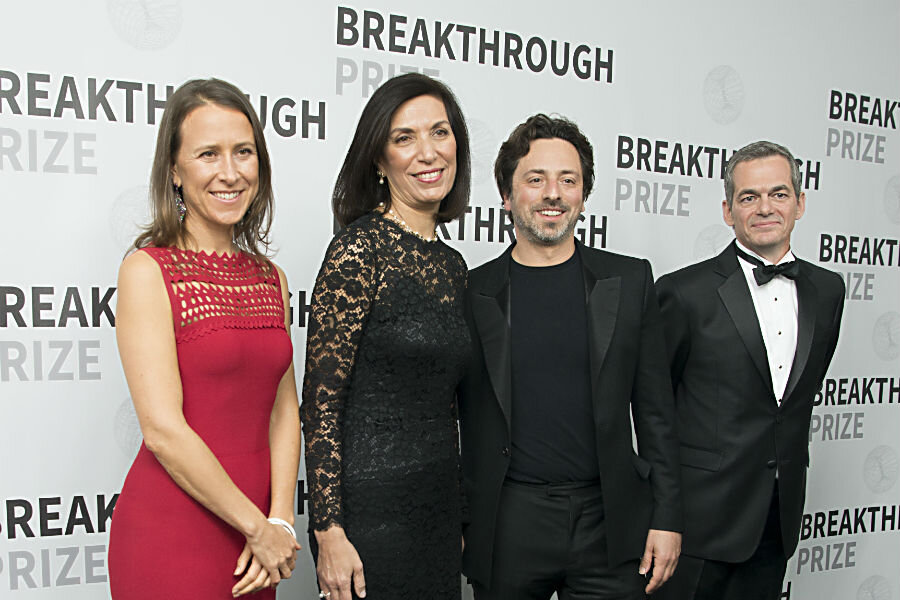'Rock star' scientists awarded $25 million in Breakthrough Prizes
Loading...
On Sunday, Silicon Valley doled out one of the biggest payouts in science.
This year, the Breakthrough Foundation awarded $25 million to geneticists, biologists, physicists, and mathematicians for groundbreaking work in their fields. The foundation also presented 10 fledgling researchers with smaller “New Horizons” prizes totaling $600,000, and two high school students with up to $400,000 each for producing science videos.
The Breakthrough Prizes for scientific achievements were created by Russian billionaire Yuri Milner, along with tech pioneers such as Mark Zuckerberg and Google co-founder Sergey Brin. In 2012, Mr. Milner presented $3 million apiece to nine theoretical physicists whom he believed should be paid and celebrated like rock stars. Today, the foundation also presents awards in life sciences and mathematics, and winners are chosen by a committee of previous winners.
“Intellectual achievement is recognized to a much smaller extent to physical achievement,” Milner said in a pre-ceremony interview, as The Washington Post reported. “I think, and my co-founders agree, this is really very much out of balance and we need to bring it more into balance.”
This year, three physicists will split a $3 million prize for their work in string theory: Harvard’s Cumrun Vafa and Andrew Strominger, and Joseph Polchinski of the University of California at Santa Barbara. In string theory, physicists consider all forces and particles to be composed of and connected by one dimensional objects called “strings.” Fundamentally, it’s the study of how our universe works.
In 1995, Dr. Polchinski introduced two dimensional objects, called “branes,” to string theory. His work suggests isolated universes existing in extra-dimensional space, interacting with other such universes at a higher dimensional plane.
One year later, Drs. Strominger and Vafa used string theory to compute the entropy of a black hole. Their work confirmed earlier predictions by Stephen Hawking, who theorized that black holes might leak radiation until they explode.
The foundation also awarded five $3 million prizes in genetics and cell biology. Harry Noller, a professor of molecular biology at the University of California at Santa Cruz, was honored for his work with RNA, which is responsible for protein coding and gene expression in living organisms.
“You can never prove how life originated but what we can now wonder is, ‘Is there a plausible way that life arose from nonliving inorganic chemistry?’ And it’s starting to look like you can connect the dots between the periodic table, the atoms available to us in the universe, and life as an emergent property of matter,” Dr. Noller told the Washington Post.
In May, the Breakthrough Foundation presented a special $3 million award to researchers from the Laser Interferometer Gravitational-Wave Observatory (LIGO), who just two months prior became the first to directly observe gravitational waves. The astrophysical phenomenon, which was first theorized by Albert Einstein, originated from a pair of co-orbiting black holes. As gravitational waves radiate outward at the speed of light, they compress and stretch spacetime.
The Christian Science Monitor’s Bamzi Banchiri reported:
The three founders of LIGO – Rainer Weiss, Kip Thorne, and Ronald Drever – dedicated their careers to proving the existence of gravitational waves. The three will split $1 million, and the remaining $2 million will be equally distributed among more than 1000 researchers and engineers on the LIGO team.
Sharing the credit – and the cash – is “much more modern and much more the way that physics gets done,” said Professor Weiss, a professor emeritus at the Massachusetts Institute of Technology in Cambridge. “You can’t credit just the three of us for this.”








